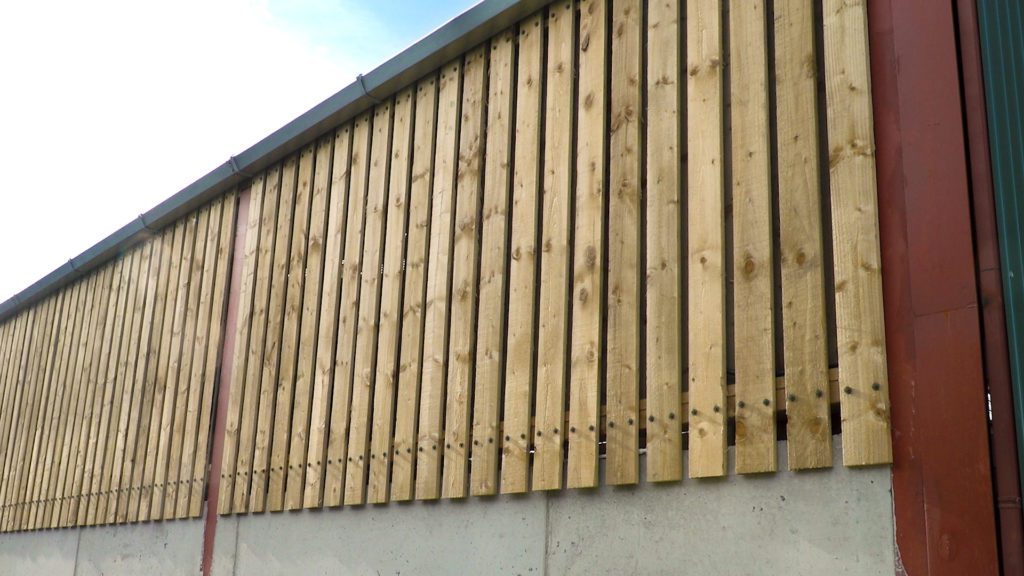The supply of fresh air within livestock housing is critical to ensure good health and maximum performance from housed livestock which in turn should help farm profitability.
Natural ventilation systems in cattle sheds provide a number of roles. Most importantly, though, they allow for the inward movement of fresh, clean air and the expulsion of stale air, odours, pathogens and viruses.
Speaking about the importance of ventilation and how to test how good the ventilation is in your own housing facilities, advisor Jack Friar of the College of Agriculture, Food and Rural Enterprise (CAFRE) said: “Pneumonia cases over the past few weeks have increased due to unfavourable weather conditions.
“This is a significant source of financial and physical loss in beef production and if it is a recurring problem on your farm then it is necessary to review your health plan and also the ventilation within your buildings – which is often an area overlooked.
This is important as reports suggest from studies carried out that improving ventilation in cattle sheds can increase productivity by 3-5% in beef cattle.
“Ensuring a sufficient supply of fresh air in buildings reduces the length of time bacteria and viruses can survive compared to poorly ventilated buildings where pathogens can survive for longer periods due to more humid stale conditions.
“Research has found that 100% fresh air kills airborne bugs 10 times quicker than 50% fresh air. In order to get fresh air into your buildings, you need somewhere for fresh air to get in [inlet] and somewhere for stagnant air to get out [outlet].
“The ‘stack effect’ is an effective way of ventilation. This involves using heat generated from the cattle inside the building, especially during very still days, which rises and leaves the building through an ‘outlet’ whether it is spaced sheeting or ideally a ridge gap.
“This then creates a negative pressure within the building which draws fresh air in through the inlets and the circulation continues. Inlets should be above cattle height to reduce exposure to draughts and should be a minimum of two but ideally four times the area size of the outlet area and should be split between both sides of the building where possible.
“Common visual signs to look out for in poorly ventilated buildings include the build-up of cobwebs and dust on the roof and corners and also rust developing on the underside of galvanised sheeting due to excessive condensation.
“Alternatively, the use of smoke pellets at various points throughout the building are a relatively cheap way to visually assess the actual airflow and help identify problematic areas.
I would advise that smoke tests are carried out during a muggy still morning as this will allow you to assess if the natural ventilation or stack effect in the shed is working correctly.
“Ideally, non-toxic smoke pellets should be used at animal height as this will give a better assessment of the air movement and conditions that animals are exposed too.
“We would be looking for the smoke to completely clear the building within 60 seconds, with no smoke lingering in the corners, as this is a strong indication that air movement is not working correctly.
“If smoke does linger in corners or in a worst case scenario the smoke rises, cools and falls back down to stock height, often the lifting or the removal of roof ridges will improve the problem by allowing stale air to escape through the outlet.
“Other common methods of rectifying airflow issues include increasing and adapting the inlet area through the use of space boarding or Yorkshire boarding.
“Solid tin and ventilated sheeting are common around the side of buildings, though the number of slotted openings in which air can travel through are very limited. For example, the slotted openings on ventilated sheeting on average provide 6% opening, while Yorkshire boarding can provide an opening area of 25%, therefore increasing the amount of fresh air entering the building.
Finally, the use of smoke pellets not only show if ventilation is not working correctly it can also show if airflow through the building is too much or too quick at animal height.
“If smoke is moving quickly along the floor of the shed and not rising, this could also be a sign of a draught in the shed which should be avoided, especially in houses with young calves.”



